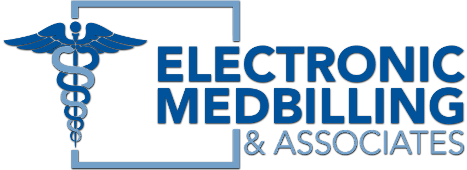40+ YEARS OF EXPERIENCE
Electronic Claims Processing
What is a medical claims clearinghouse, Electronic Claims Procressing ?
Why Clearinghouses Transmit Electronic Claims to Insurance Carriers, and Why the Services they Provide are Essential to Medical Practices
The simplest way to explain what a medical claims processor is and what they do is to paint a picture of the problem they solve - their piece of the puzzle.
Imagine several million licensed healthcare professionals all using a different claim software, sending out medical claims to over 4000 different insurance carriers, daily - across fifty different states - each state having its own insurance regulations; and then each carrier having its own internal software infrastructure.
In essence, what you have is the perfect recipe for an information super disaster.
If on average just 10 claims per day were sent to 5 different insurance carriers by every practice, you'd have millions of medical claims daily heading to the four corners of the earth. Now, compound this scenario with the numerous phone calls and claim re-submittals that each claim error produces until all reimbursement issues are resolved and the bill is paid.
For years this was carried out on paper -an absolute nirvana for the U.S. Postal Service, who just so happens to have the infrastructure to handle it. And on a good day they do.
But the manpower required for thousands of insurance carriers to handle all the paper work and phone calls for each claim error represents a huge cost to HealthCare, which we as beneficiaries pay by way of insurance premiums (here, a medical office manager would say: "Just pay the darn claim and I wouldn't have to call!), but that would eliminate the problem: Somehow, deep in our subconscious, it appears that we really need all those auditors, adjusters, underwriters, actuaries, reviewers, and insurance bureaucrats et el.
How a Clearinghouse Works
Here's the nuts and bolts of how it works. The medical billing software on your desktop creates the electronic file (the claim) also known as the ANSI-X12 837 file, which is then sent (uploaded) to your clearinghouse account. The clearinghouse then scrubs the claim checking it for errors (arguably the most important thing a clearinghouse does); and then once the claim is accepted, the clearinghouse securely transmits the electronic claim (very important) to the specified payer with which it has already established a secure connection that meets the strict standards laid down by a HIPAA.
At this stage, the claim is either accepted or rejected, but either way, a status message is usually sent back to the clearing house who then updates that claim's status in your claim software. It then alert's you with a status update that you have an accepted or rejected claim. If rejected, you have a chance to make any needed corrections, and then re-submit the claim. Ultimately assuming there are no other corrections required, and the patient's insurance was valid, you'll receive a reimbursement check along with an explanation of benefits (EOB). “All very simple right?” Not.
The same sort of activity takes place every night within the federal banking system as our checks and banking .Services subpage "electronic claims" page the clearing house text needs to be added activities are sent electronically from local banks to central ACH repositories (Automated Clearing Houses) and then on to banks of origin across the country, and then back to local banks -- all done electronically, and somewhat instantly, all behind the scenes.
Thus today, you have dozens of regional medical billing clearinghouses throughout the country all serving the same role; that of scrubbing medical claims and then transmitting the electronic claim information securely to insurance carriers.
You might think: "That's nice, but why do I need one?"
In a nut shell. Using a clearinghouse to send electronic claims:
- Allows you to catch and fix errors in minutes rather than days or weeks
- Results in significantly higher claim success --fewer rejected claims.
- Rapid claims processing: submission can reduce your reimbursement times to under ten days.
- Submit all your electronic claims in batch all at once, rather than submitting separately to each individual payer.
- Eliminates the need to manually re-key transaction data over and over at each payer's website.
- It provides a single location to manage all your electronic claims
- Vastly improve vender relationships with insurance carriers.
- Avoid long wait-times being on hold with Medicare and Blue Cross inquiring about claim errors.
- If you subscribe to a good clearinghouse, you'll be speaking with a knowledgeable support person within just a few rings.
- Shorter payment cycles lead to more accurate revenue forecasts.
- Reduce or eliminate need for paper forms, envelopes and stamps
- Plain and simple, using a clearing-house greatly simplifies and speeds up your claims processing.
- Our implementation and support teams work together with your staff to provide smooth implementation and ongoing support. Upon receipt of your files we will apply clearinghouse edits that are designed to enhance compliance with current coding guidelines, and reduce the errors that delay reimbursement.
PROVIDER PAYMENT
IS OUR NO#1 PRIORITY & ALWAYS WILL BE.WE CARE ABOUT YOU AND YOUR MEDICAL BILLING NEEDS!

330-332-3115
Salem, OH 44460
© 2024
All Rights Reserved | Electronic Med Billing
